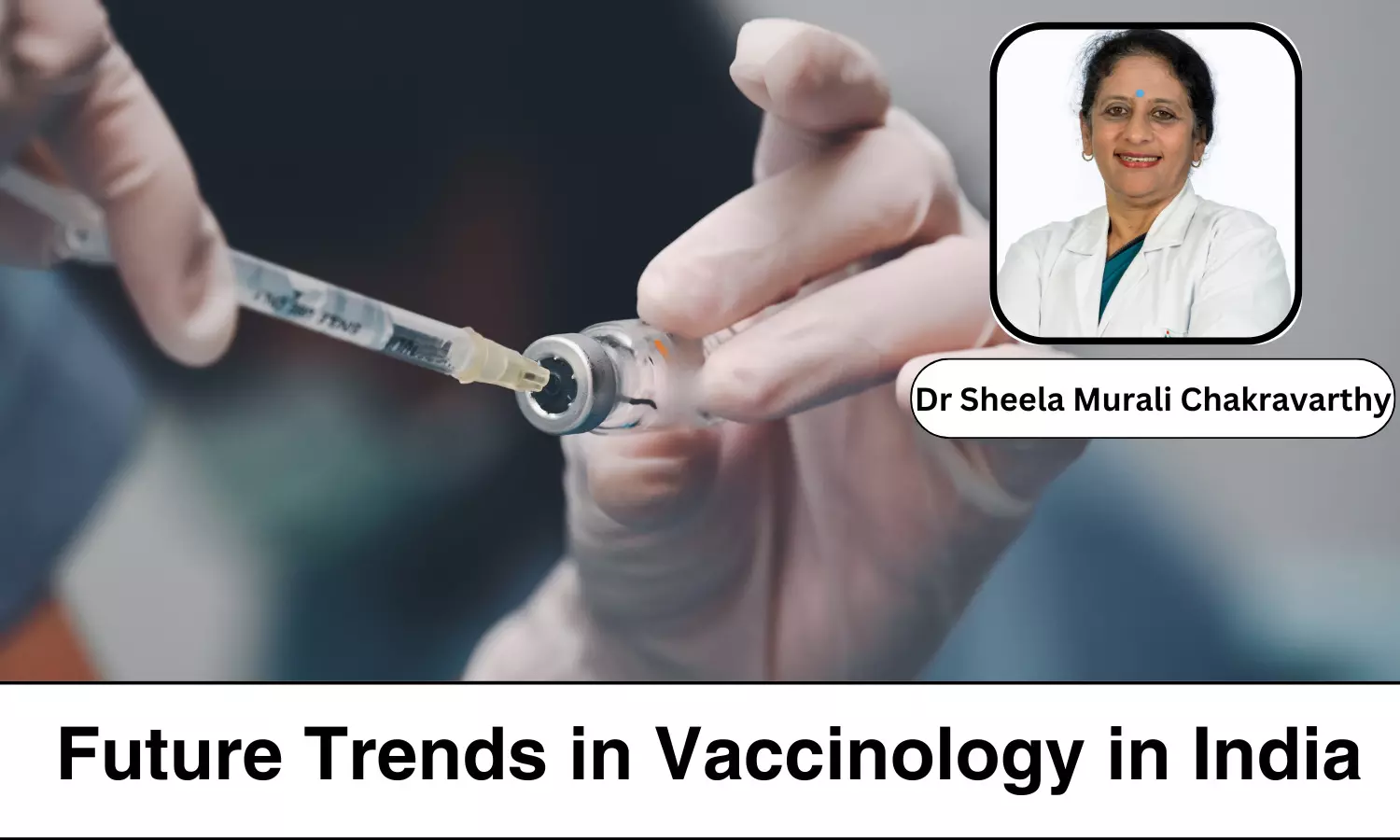Future Trends in Vaccinology in India: A Shot at a Healthier Tomorrow – Dr Sheela Murali Chakravarthy

Vaccines have
revolutionized public health, drastically reducing the burden of infectious
diseases. India, with its robust immunization program, has played a significant
role in this global victory. However, the fight doesn’t end here. Emerging
pathogens, antibiotic resistance, and chronic illnesses demand constant
innovation in vaccinology.
Revolutionizing
Delivery: Beyond the Needle
The traditional
syringe-based injection, while effective, has limitations. Pain, needle phobia,
and the need for trained personnel can be barriers to vaccination. Novel
delivery systems are emerging to address these concerns:
- Microneedle Patches: These painless patches contain microscopic needles that
deliver vaccines through the skin’s surface. This approach is ideal for
mass vaccination campaigns and self-administration, particularly for
children and needle-phobic individuals. - Thermostabilization Technologies: Heat sensitivity limits vaccine storage and distribution,
especially in resource-limited settings. New technologies like
thermostabilizers and desiccation (drying) are being explored to create
heat-resistant vaccines that don’t require refrigeration, facilitating
wider accessibility. - Oral Vaccines: The convenience of oral administration is unmatched.
Researchers are developing encapsulated vaccines that can survive the
harsh digestive environment and effectively stimulate immune response.
This would be a game-changer for mass vaccination programs, particularly
in regions with limited healthcare infrastructure. - Nanoparticle-Based Delivery
Systems: Nanoparticles can encapsulate vaccine
antigens and deliver them specifically to target cells. This targeted
approach can enhance immune response while reducing side effects.
Adjuvants:
Boosting the Immune Response
Vaccine adjuvants
are substances added to vaccines to strengthen the immune response. These are
crucial for vaccines against pathogens with weak immunogenicity or for
overcoming immune tolerance in chronic conditions.
- Stimulating Pattern Recognition
Receptors (PRRs): PRRs on immune cells
recognize specific molecular patterns associated with pathogens. New
adjuvants are being designed to target these PRRs, triggering a stronger
and more specific immune response. - Modulating the Immune System: Adjuvants can be tailored to modulate the type of immune
response elicited by a vaccine. For example, some adjuvants can promote a
Th1 cell response, which is crucial for fighting intracellular pathogens,
while others can promote a Th2 cell response, which is important for
fighting allergies.
Beyond
Infectious Diseases: Vaccines for the Future
Traditionally,
vaccines have targeted infectious diseases. However, the potential of vaccines
to address non-communicable diseases (NCDs) is a fascinating new frontier:
- Cancer Vaccines: These vaccines aim to either prevent infection with
cancer-causing viruses (e.g., HPV vaccine) or to stimulate the immune
system to recognize and attack cancer cells. India has ongoing research on
therapeutic cancer vaccines for existing cancers, such as cervical cancer. - Autoimmune Disease Vaccines: Autoimmune diseases arise when the immune system attacks
healthy tissues. Vaccines are being explored to either induce tolerance to
self-antigens or to reprogram immune cells to prevent them from attacking
healthy tissues. - Allergy Vaccines: Allergy vaccines work by exposing the body to small amounts of
allergens over time, gradually desensitizing the immune system. This
approach offers a long-term solution for managing allergies.
Challenges
and the Road Ahead
Despite the promise
of these advancements, significant challenges remain:
- Research and Development Costs: Developing new vaccines is a resource-intensive process.
Government and private sector collaboration is crucial to support research
and make these vaccines affordable. - Regulatory Frameworks: Regulatory pathways for novel vaccine platforms need to be
streamlined to expedite vaccine development and approval without
compromising safety. - Public Awareness and Vaccine
Hesitancy: Addressing vaccine hesitancy
through effective communication and community engagement is essential for
the successful implementation of these new technologies.
India is
well-positioned to be a leader in the future of vaccinology. By embracing these
emerging trends and addressing the existing challenges, Indian researchers can
develop innovative vaccines that not only combat infectious diseases but also
address the growing burden of NCDs. This will ensure a healthier future for
India and the world.



